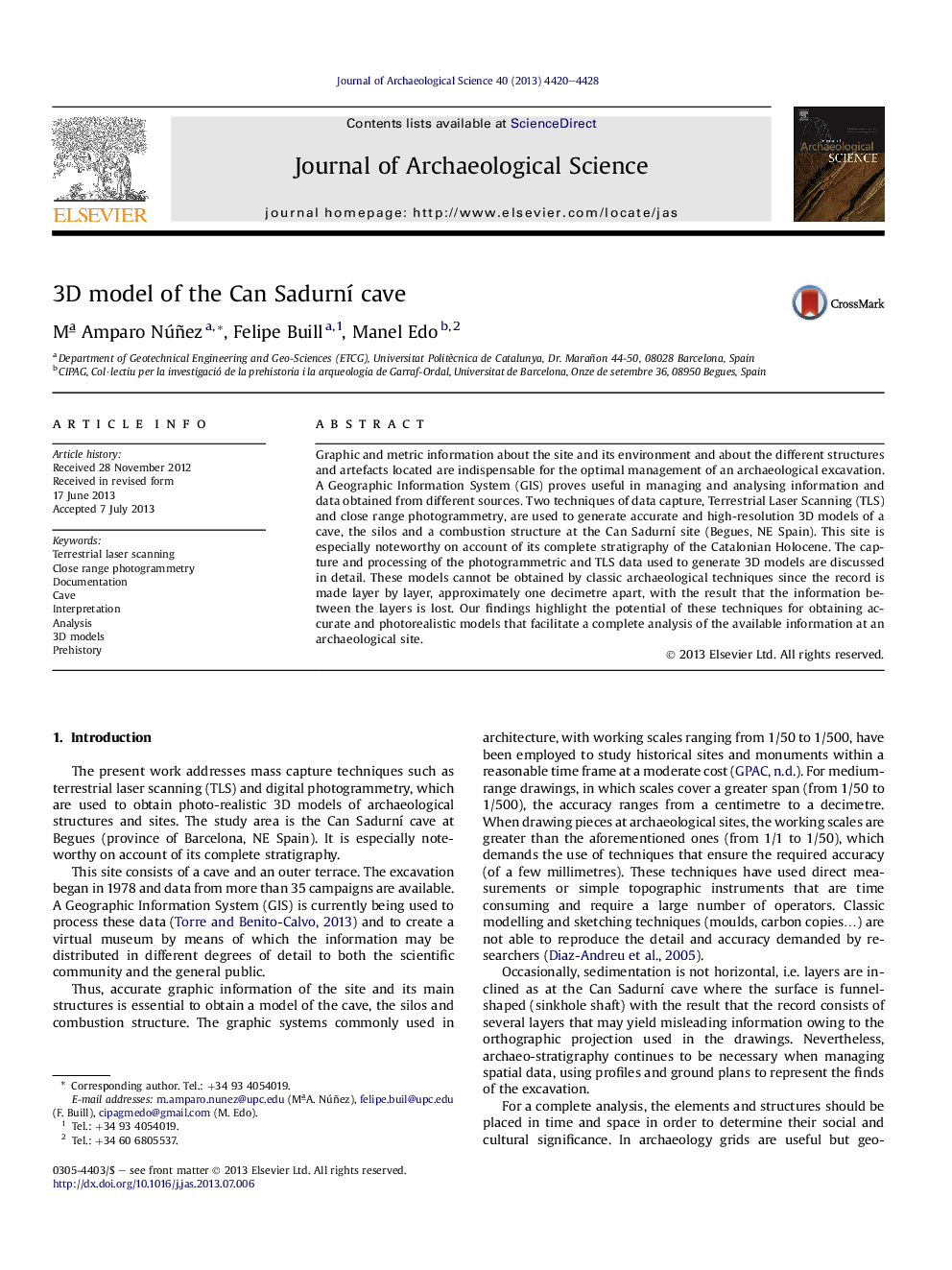| Article ID | Journal | Published Year | Pages | File Type |
|---|---|---|---|---|
| 7443943 | Journal of Archaeological Science | 2013 | 9 Pages |
Abstract
Graphic and metric information about the site and its environment and about the different structures and artefacts located are indispensable for the optimal management of an archaeological excavation. A Geographic Information System (GIS) proves useful in managing and analysing information and data obtained from different sources. Two techniques of data capture, Terrestrial Laser Scanning (TLS) and close range photogrammetry, are used to generate accurate and high-resolution 3D models of a cave, the silos and a combustion structure at the Can Sadurnà site (Begues, NE Spain). This site is especially noteworthy on account of its complete stratigraphy of the Catalonian Holocene. The capture and processing of the photogrammetric and TLS data used to generate 3D models are discussed in detail. These models cannot be obtained by classic archaeological techniques since the record is made layer by layer, approximately one decimetre apart, with the result that the information between the layers is lost. Our findings highlight the potential of these techniques for obtaining accurate and photorealistic models that facilitate a complete analysis of the available information at an archaeological site.
Keywords
Related Topics
Physical Sciences and Engineering
Materials Science
Materials Science (General)
Authors
Ma Amparo Núñez, Felipe Buill, Manel Edo,
